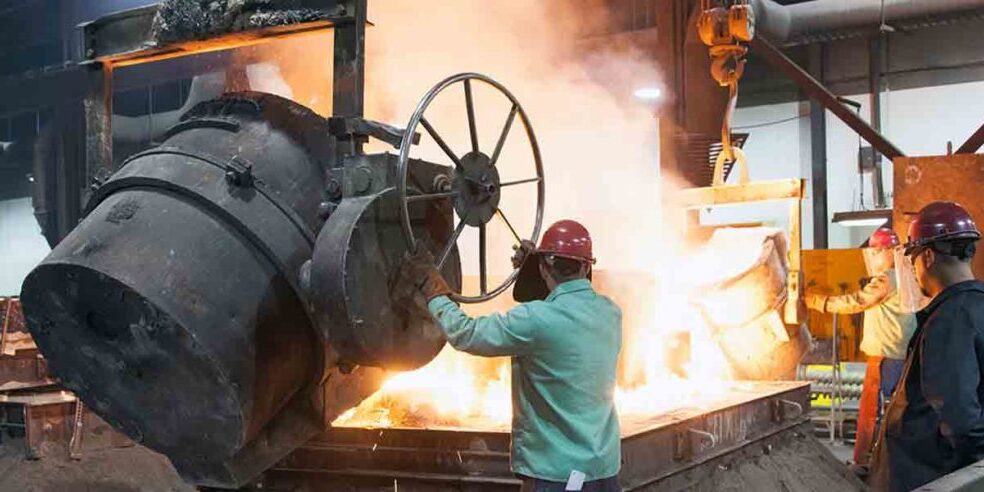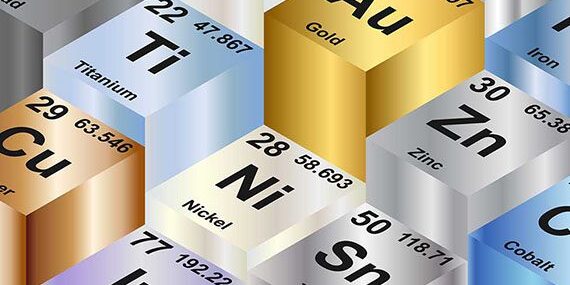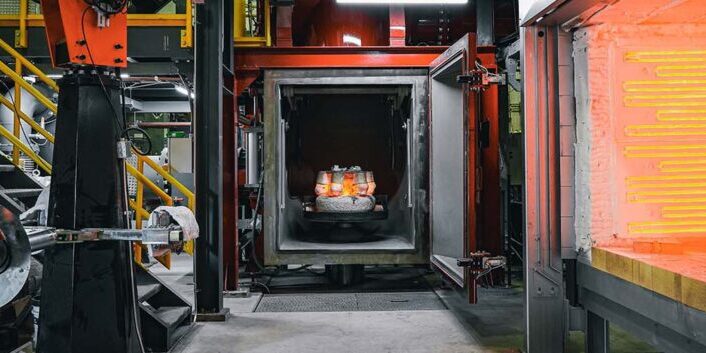Blog Copper Based Alloys – An Overview
By: Dave Olsen
How strong is copper? The answer is it depends on which copper-based alloy you choose. You can achieve superior corrosion resistance and/or durability in applications that require wear and galling resistance. Copper is a heavy metal that can provide the strength equivalent of steel. But first, let’s differentiate between two copper alloys – brass and bronze. In some quarters of the industry, the terms are used interchangeably or are considered other words for copper.

What Is The Difference Between Brass and Bronze?
Brasses are copper-based alloys that contain zinc as the principal alloying element. This zinc copper alloy may also contain minor amounts of other elements such as iron, nickel, silicon, or aluminum. A typical example is 60-40 yellow brass, designated as C85500. The zinc copper alloy contains 59% – 63% copper, around 40% zinc, and 0.8% aluminum. It is the high zinc content that would have the material classified as brass.
Bronzes are copper-based alloys in which the major alloying element is not zinc or nickel. Originally, the term “bronze” described copper alloys that used tin as the only or principal alloying element. That nomenclature has evolved, however.
The term bronze is now used with a preceding modifier that describes the type of bronze it is, by indicating the major alloying element(s). For example, MTEK 175/C95400 is called an aluminum bronze because it is made up of 11% aluminum in addition to 85% copper and 4% iron. MTEK 83-7-7-3/C93200 is a high-lead tin bronze because it contains 7% tin and 7% lead in addition to 83% copper and 3% zinc. These examples meet the criteria of a bronze. The major alloying element is not zinc or nickel, and its modifying words fully describe the alloys as having substantial quantities of aluminum in the case of aluminum bronze and lead and tin in high lead-tin bronze.
With the differentiation of brass and bronze established, our discussions will be limited largely to the bronze family of alloys. Bronze alloys are uniquely suited to a wide range of industrial applications.
Aluminum Bronze
Aluminum bronzes are a family of alloys containing aluminum as the principal alloying element. Although, they may also contain iron and nickel. Aluminum significantly adds to alloy properties to the point that its strength is like that of a medium carbon steel. Aluminum bronzes have many other valuable characteristics.
Initial applications stemmed mainly from the strength and corrosion-resistant properties of the material. The recognition of other properties led to the use of aluminum bronzes for a variety of parts requiring hardness, resistance to wear and galling, and low magnetic permeability. Other features include resistance to cavitation, erosion, softening, and oxidation at elevated temperatures. These properties, together with ease of weldability, have greatly extended their uses.

There are some major groups in the Aluminum Bronze family: Aluminum Bronze and Nickel Aluminum Bronze. Aluminum Bronze contains approximately 9-14% aluminum and 4% iron while Nickel Aluminum Bronze contains approximately 9-11% aluminum, 4% iron, and 5% nickel. That addition of nickel in the latter further improves the corrosion resistance of a material that is already strong in this area.
Being responsive to thermal treatment allows the alloys in this group with less than 10% aluminum to have corrosion resistance significantly enhanced for use in aggressive environments. Alloys with aluminum contents over 12% possess excellent compressive strength and excellent anti-galling characteristics. These properties produce alloys ideally suited for the deep drawing and forming of stainless steels. Additionally, this group of bronzes possess high mechanical properties and is used for gears, wear plates, corrosion-resistant applications, bearings, glands, and structural parts.
Some typical Aluminum Bronzes include: MTEK 125/C95200, MTEK 175/C95400, MTEK 275/C95900 and MTEK 375.
Nickel Aluminum Bronze
This group of alloys contains nickel and is primarily selected where a combination of high strength, corrosion resistance, and resistance to cavitation and erosion damage is required. They have a history of reliable performance in seawater applications. They perform particularly well under stagnant conditions because resistance to pitting and crevice corrosion attack is superior to that of the 300 series stainless steels. The alloys are stronger than 300 series stainless steel.
Alloys of both the aluminum bronze family and the nickel aluminum bronze family possess excellent machinability, are easily weldable, and can be successfully joined to many other dissimilar alloys. This versatility allows their use in a variety of applications.
Typical alloys in this group include: MTEK 230/C95500 and MTEK 230-N/C95800.
Tin Bronze
This group of alloys consists of copper with the major alloying element being tin. The presence of tin provides high mechanical properties at the expense of higher metal cost. The high tin bronzes, however, are particularly suited for certain applications for which the less expensive bronzes are not suitable. The variations in chemistry, particularly the addition of lead, are primarily designed to enhance machinability characteristics and pressure tightness. Alloys in this group are particularly resistant to corrosion caused by certain specific materials.
In general, these alloys can operate as bearings at maximum temperatures up to 500°F / 260°C and loads of 4000 lbs. per square inch. Bearings of these alloys, however, must be very carefully aligned and positively lubricated, and they require harder shafts than do the high-leaded bronzes.
Tin bronze alloys are regularly used in heavy load / low-speed service applications, as such they are the premier gear alloys for long life under heavy loads. They are used for piston pin bushings, valve guides, rolling mill bearings, worm bearings, pilot bearings, and linkage bushings for the machine tool industry. They are also used for steam fittings, pump impellers, and seal rings.
Some popular alloys in the tin bronze group are: MTEK Tin Bronze/C90500, MTEK 65/C90700, Navy G 1% Lead/C92300, MTEK 87-11-0-1/C92500, and MTEK Leaded Tin Bronze/C92700.
High Lead Tin Bronze (Bearing Bronze)
Four alloys listed below contain lead in quantities up to 25%. They are a representative group of high-lead tin bronzes most widely used for bearings and bushings. Their load-carrying capacity varies directly with their tin content. However, it will also be impacted by the presence of small amounts of other alloying elements such as nickel and phosphorus. Lead in the alloy is insoluble and is finely dispersed mechanically in the copper-tin matrix. This combination gives good load-carrying capacity and toughness due to the copper-tin content and gives lubricity, conformability, and embeddability due to the free lead that is frozen into the alloy.
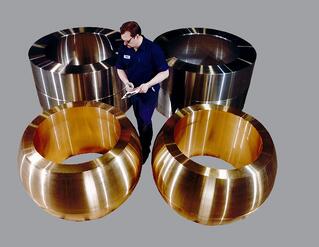
These alloys are superior bearing alloys when all properties and costs are considered. They range from maximum operating temperatures of 450°F / 230°C and load capacities of 4,000 lbs. per square inch for those with the highest tin content to maximum operating temperatures of 400°F / 200°C and load capacities of 3,500 lbs. per square inch for those lowest in tin content.
Typical bearing bronzes in this family are: MTEK 83-7-7-3/C93200, MTEK 80-10-10/C93700, MTEK 79-6-15 Hi Lead/C93900, and MTEK 943/C94300.
Bearium Alloys
For over 60 years, Bearium® Metals have been chosen for performance under the toughest operating conditions. These are high-lead tin bronze alloys containing virgin copper, tin, and specially processed lead. Bearium® metals can be used where other bearing materials may fail due to speed, load, temperature, or where lubrication is difficult, impossible, or simply neglected.
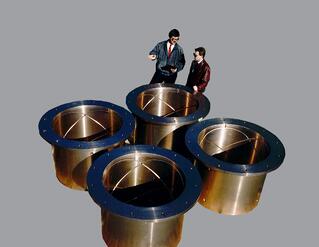
There are four grades available, B-4, B-8, B-10, B-11. B-4 has the highest lead content and is most suitable for softer mating parts. B-11 has the lowest lead content and is more often used when high strength is more important.
The chemical composition alone does not entirely explain the superior frictional properties found in Bearium Metal. The elevated performance is also due in great measure to the processing of the ingredients used. This results in a metallurgical structure that is superior to that found in other bearing materials even though they may have identical chemical compositions.
There are four grades of Bearium® alloys. The primary difference between the grades is the amount of lead contained. Bearium®B-4 contains 26% lead, B-8 has 22%, B-10 has 20%, and B-12 contains 18% lead.
Manganese Bronze
The family of Manganese Bronzes is primarily known for its extremely high strength and its ability to resist the corrosive effects of seawater and brine. Tensile strengths ranging from 60,000 psi to 110,000 psi are readily obtainable depending on the composition of the alloy chosen. Great care must be taken when using these alloys as bearings because manganese bronze and steel do not wear well together. Wear is rapid, and under high loads and speed, a seizure can occur. Alignment must be precise and positive lubrication is essential.
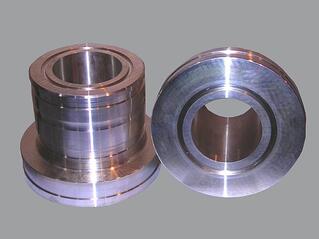
Both aluminum bronze and manganese bronzes require close foundry process controls. Both groups of alloys can be detrimentally affected by small amounts of impurities, so excellent foundry practice and cleanliness in the melting process is essential. Where alloys of tin bronze, high leaded tin bronze, manganese bronze, and aluminum bronzes are poured, close internal control and discipline are necessary.
Manganese bronzes are used for trunnion bearings, heavily stressed gears, gearshift forks, impellers, marine propellers, valve stems, worm gears, and worms. It is also used for highly stressed machine parts.
Typical manganese bronzes are: MTEK Hi Tensile/C86300, MTEK Leaded Manganese/C86400, MTEK Low Tensile/C86500, and MTEK Med Tensile/C86200.
Conclusion
With an understanding of the environment, it is possible to select a copper-based alloy that will deliver the highest performance in a cost-effective way.

